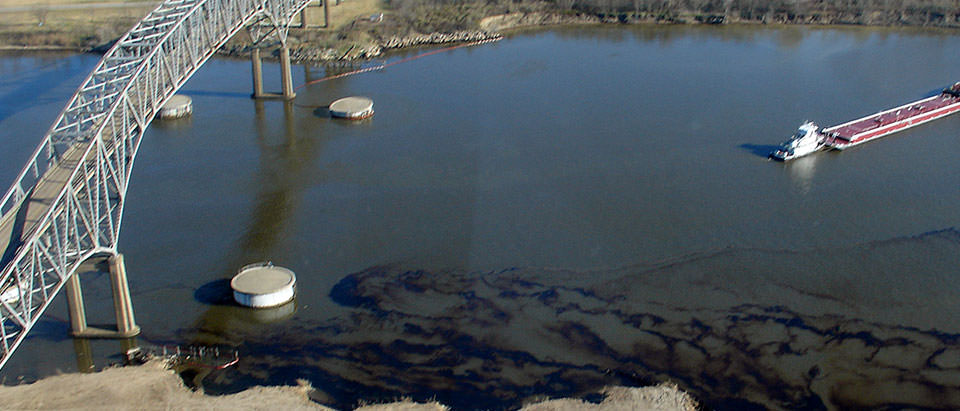What is HAZMAT?
HAZMAT is an abbreviation for “hazardous materials."

In January 2010, NOAA’s Office of Response and Restoration was notified of a collision between a crude oil tanker (T/V Eagle Otome) and a barge in Port Arthur, Texas.
HAZMAT is an abbreviation for “hazardous materials”—substances in quantities or forms that may pose a reasonable risk to health, property, or the environment. HAZMATs include such substances as toxic chemicals, fuels, nuclear waste products, and biological, chemical, and radiological agents. HAZMATs may be released as liquids, solids, gases, or a combination or form of all three, including dust, fumes, gas, vapor, mist, and smoke.
HAZMAT spills have caused health problems, injuries, and even death in people and animals, and have damaged buildings, homes, property, and the environment. Given such dire consequences, it is reasonable to conclude that one may not encounter HAZMATs on a daily basis. The truth, however, is that many products containing hazardous chemicals are routinely used and stored in homes, and are transported every day on the nation's highways, railroads, waterways, and pipelines.
HAZMAT Incidents
Thousands of incidents occur each year in which HAZMATs are released into the environment as a result of accidents or natural disasters. In addition to potentially harming people and the environment, spills in coastal waters may cause substantial disruption of marine transportation with potential widespread economic impacts. Both coastal and inland spills are called HAZMAT incidents, and are routinely addressed by first responders like firefighters and local law enforcement.
NOAA HAZMAT Response
Under the National Contingency Plan, NOAA provides scientific support to the Federal On-Scene Coordinator for oil and other HAZMAT spills, and participates in emergency response activities in coastal and near-coastal waters.
NOAA's Office of Response and Restoration responds to 150-175 HAZMAT incidents each year. Most are oil spills originating from leaking pipelines or vessel collisions, as well as hurricanes and drilling well blowouts, such as the 2010 Deepwater Horizon spill in the Gulf of America.
For the thousands of minor incidents handled by first responders, NOAA and the U.S. Environmental Protection Agency collaborate on tools like the CAMEO software suite that offer fast access to chemical properties and other relevant information.
Social